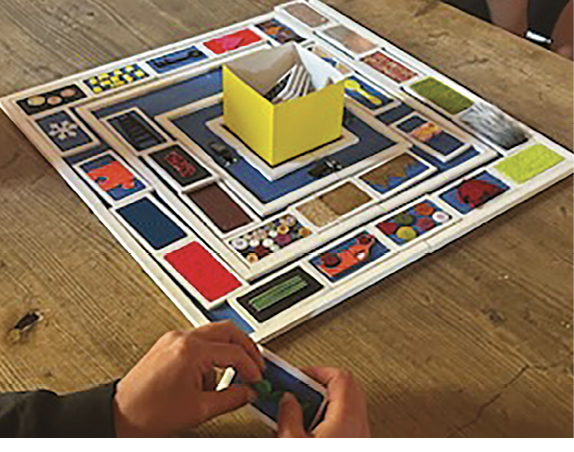It’s certainly good to have a series of easy-to-make supports.
Being able to form dynamic collaborations among family members or sight-impaired people could help develop optimal situations.
Among parents of children as well as family members of adults and even the elderly.
A system where the family can physically create (according to their skills, possibilities, and needs) a tool or an environment for learning and well-being.
They may be helped and supported by experts in order to independently create structural forms for the environment or specific objects.
The numerous initiatives and programs that the Istituto Ricerca Formazione Riabilitazione Nazionale (National Institute for Research, Training, and Rehabilitation) promotes and supports in Italy can certainly help us imagine potential situations. Having participated in G.E.S.T.I. Gioco E Sperimento Tutto Insieme (Play and Experiment All Together), and having attended the series of meetings for parents "Insieme si cammina più sicuri" (Together We Walk Safer”), I saw situations where this system could be productive. Attending along with parents, I saw a great desire to be involved in moments of growth and fun with their children.
During some recreational initiatives, we intentionally looked for activities that let us play with parents and children in the same place and at the same time.
Playing and spending time with these two components, we saw that both parents and children enjoyed being there and playing together.
The children were happy to share the instructors with their parents, and, at the same time, the parents could see their children in situations and relations that are otherwise hard to observe, experiencing them first-hand.
Another clear aspect was the pleasure of being with the parents and sharing situations, thoughts, fears, and certainties.
Assembling a laboratory of supports can be a way to care for a visually-impaired family member (whether a child, parent, or person of the same age), but also to think proactively about their daily life.

Likewise, if we take the ICF of the WHO, we find that direct participation in the well-being of others can generate positive and healthier situations.
Being able to design a practical exercises, including ones to be carried out by a small group of adults, could involve all of these positive aspects.
Family members often made requests for specific games and toys that their children could play with, that they could play together with their children, and could propose to schools and to groups of friends of the same age. Workshops could be held to teach parents how to build toys and spaces for play.
An online platform would be a great tool: people could create tutorials or write instructions or present ideas that could be repeatable. Repeatable and improvable in an open-source space.
This would offer a nationwide platform to promote communication and the sharing of “good educational practices.”

.jpg)



.png)